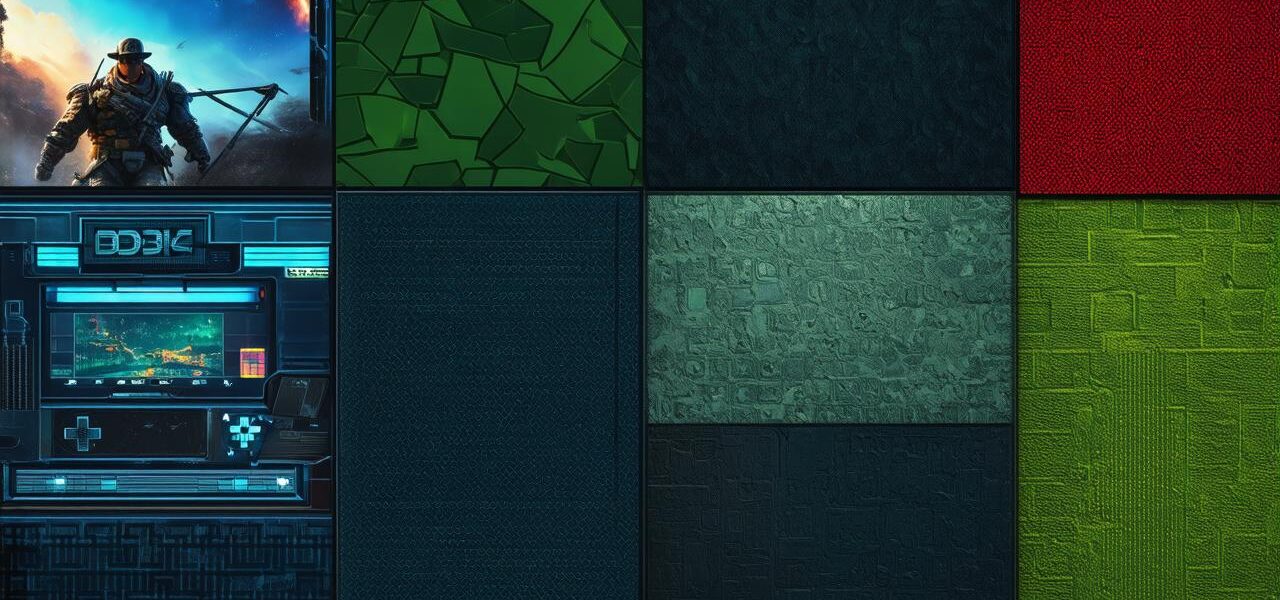Types of Art Roles in Gaming
Before we dive into salaries, it’s important to understand the various art roles in gaming. Here are some common positions:
- Concept artist: This person creates initial sketches and designs for characters, environments, and other game elements. They often work closely with game designers and producers to ensure that their concepts align with the overall vision of the project.
- 3D modeler: As the name suggests, this person creates 3D models of game assets such as characters, weapons, and vehicles. They use specialized software to transform 2D designs into three-dimensional objects that can be rendered in-game.
- Texture artist: Texture artists create the visual details that give game objects their unique appearance. This includes everything from skin textures on characters to weather effects on environments.
- Environment artist: Environment artists design and create the game world, including landscapes, buildings, and other structures. They often work in collaboration with level designers to ensure that the environment is both visually appealing and functional.
- Animation artist: Animation artists bring game characters and objects to life by creating realistic movements and interactions. They use specialized software to animate models, which can be incredibly time-consuming and detail-oriented.
Factors Affecting an Artist’s Salary
Now that we’ve covered some of the most common art roles in gaming let’s look at what factors can influence an artist’s salary. Here are a few key factors:
- Experience: The more experience an artist has, the higher their salary is likely to be. This includes both the number of years working and the specific projects they have contributed to.
- Portfolio: An artist’s portfolio is a visual representation of their work and showcases their skills and abilities. A strong portfolio can help an artist land higher-paying jobs and negotiate better salaries.
- Location: The cost of living in different parts of the world can greatly affect an artist’s salary. Artists working in urban areas or major game development hubs may earn more than those in less expensive regions.
- Company size and budget: Larger companies with bigger budgets are often able to offer higher salaries for their employees, including artists.
- Type of project: Certain types of projects, such as AAA games, may pay higher salaries than smaller indie projects or mobile games.
Real-Life Examples
Now that we’ve covered the factors that can affect an artist’s salary let’s look at some real-life examples to help you understand what to expect. Here are a few examples:
- Concept artist: A concept artist with 5 years of experience working on high-profile projects can expect to earn a salary range of $80,000 to $120,000 per year. However, this salary can vary depending on the specific project and the company’s budget.
- 3D modeler: A 3D modeler with 7 years of experience working on AAA games can expect to earn a salary range of $90,000 to $150,000 per year. Again, this salary can vary depending on the specific project and the company’s budget.
- Texture artist: A texture artist with 3 years of experience working on mobile games can expect to earn a salary range of $60,000 to $80,000 per year. However, this salary can vary depending on the specific project and the company’s budget.
- Environment artist: An environment artist with 5 years of experience working on indie projects can expect to earn a salary range of $70,000 to $110,000 per year. However, this salary can vary depending on the specific project and the company’s budget.
FAQs
Now that we’ve explored the world of video game art and answered some common questions let’s wrap up with a few FAQs to help you understand more about what it takes to become a successful artist in this field:
- How long does it take to become a professional video game artist? It can take anywhere from 2 to 4 years to complete a degree in art or design, and many artists also pursue additional training or practice to hone their skills.
- What education or training is required to be a successful video game artist? There are no specific requirements for becoming an artist in the gaming industry, but many employers prefer candidates with a degree in art, design, or a related field.
- Can I become a video game artist if I’m not from the United States? Yes, there are many talented artists working in the gaming industry around the world, and companies are always looking for skilled individuals regardless of their location.
- What software do I need to be a successful video game artist? The software you’ll need depends on your specific role as an artist. For example, 3D modelers will need specialized software like Maya or Blender, while texture artists will need programs like Photoshop or Substance Painter.

Conclusion
In conclusion, the world of video game art is a highly competitive and rewarding field. While salaries can vary depending on factors such as experience, location, and project type, there are opportunities for talented artists to earn significant incomes in this industry. Whether you’re just starting out or looking to take your skills to the next level, with dedication and hard work, you can become a successful video game artist.




